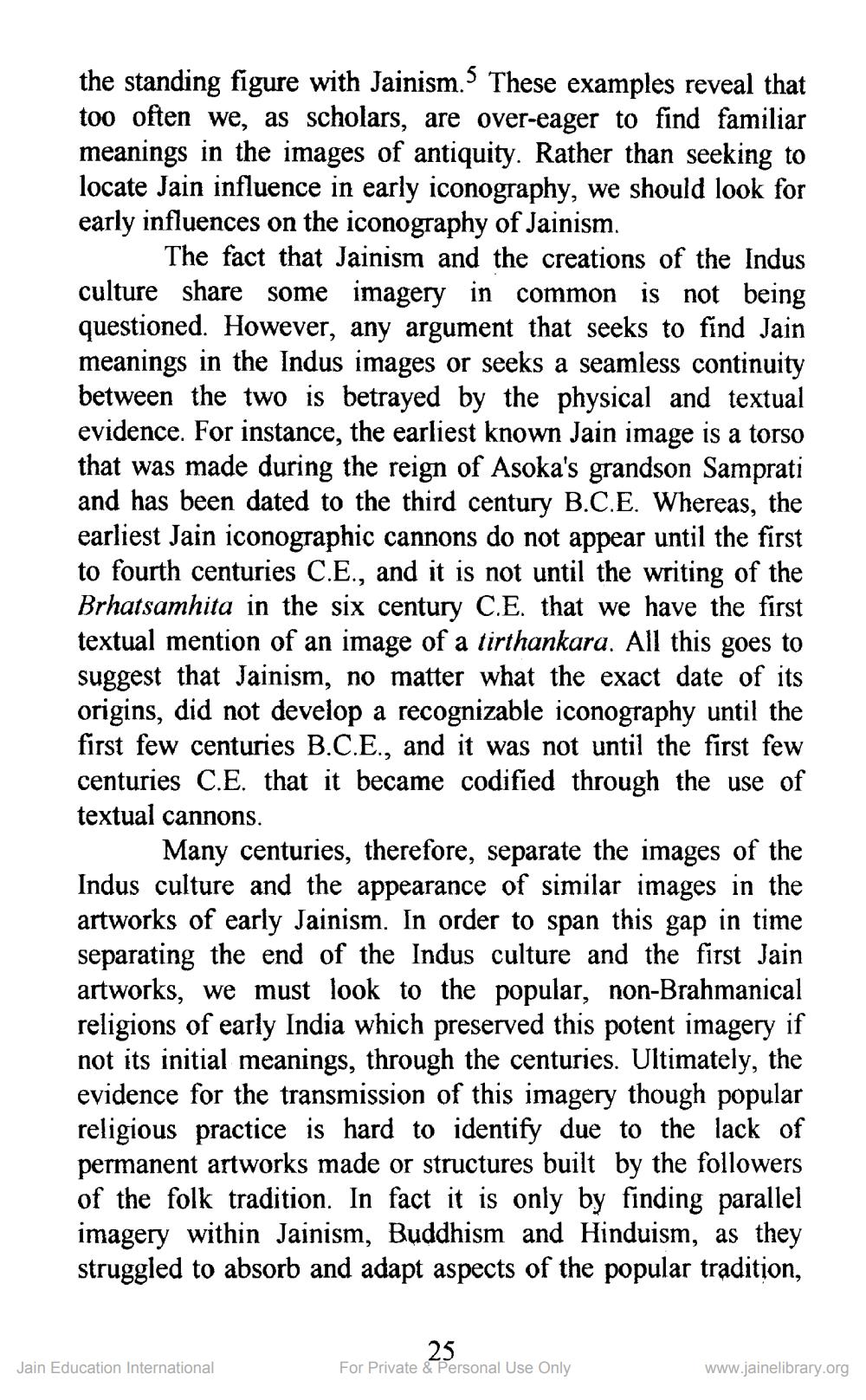________________
the standing figure with Jainism.5 These examples reveal that too often we, as scholars, are over-eager to find familiar meanings in the images of antiquity. Rather than seeking to locate Jain influence in early iconography, we should look for early influences on the iconography of Jainism.
The fact that Jainism and the creations of the Indus culture share some imagery in common is not being questioned. However, any argument that seeks to find Jain meanings in the Indus images or seeks a seamless continuity between the two is betrayed by the physical and textual evidence. For instance, the earliest known Jain image is a torso that was made during the reign of Asoka's grandson Samprati and has been dated to the third century B.C.E. Whereas, the earliest Jain iconographic cannons do not appear until the first to fourth centuries C.E., and it is not until the writing of the Brhatsamhita in the six century C.E. that we have the first textual mention of an image of a tirthankara. All this goes to suggest that Jainism, no matter what the exact date of its origins, did not develop a recognizable iconography until the first few centuries B.C.E., and it was not until the first few centuries C.E. that it became codified through the use of textual cannons.
Many centuries, therefore, separate the images of the Indus culture and the appearance of similar images in the artworks of early Jainism. In order to span this gap in time separating the end of the Indus culture and the first Jain artworks, we must look to the popular, non-Brahmanical religions of early India which preserved this potent imagery if not its initial meanings, through the centuries. Ultimately, the evidence for the transmission of this imagery though popular religious practice is hard to identify due to the lack of permanent artworks made or structures built by the followers of the folk tradition. In fact it is only by finding parallel imagery within Jainism, Buddhism and Hinduism, as they struggled to absorb and adapt aspects of the popular tradition,
Jain Education International
25
For Private & Personal Use Only
www.jainelibrary.org




